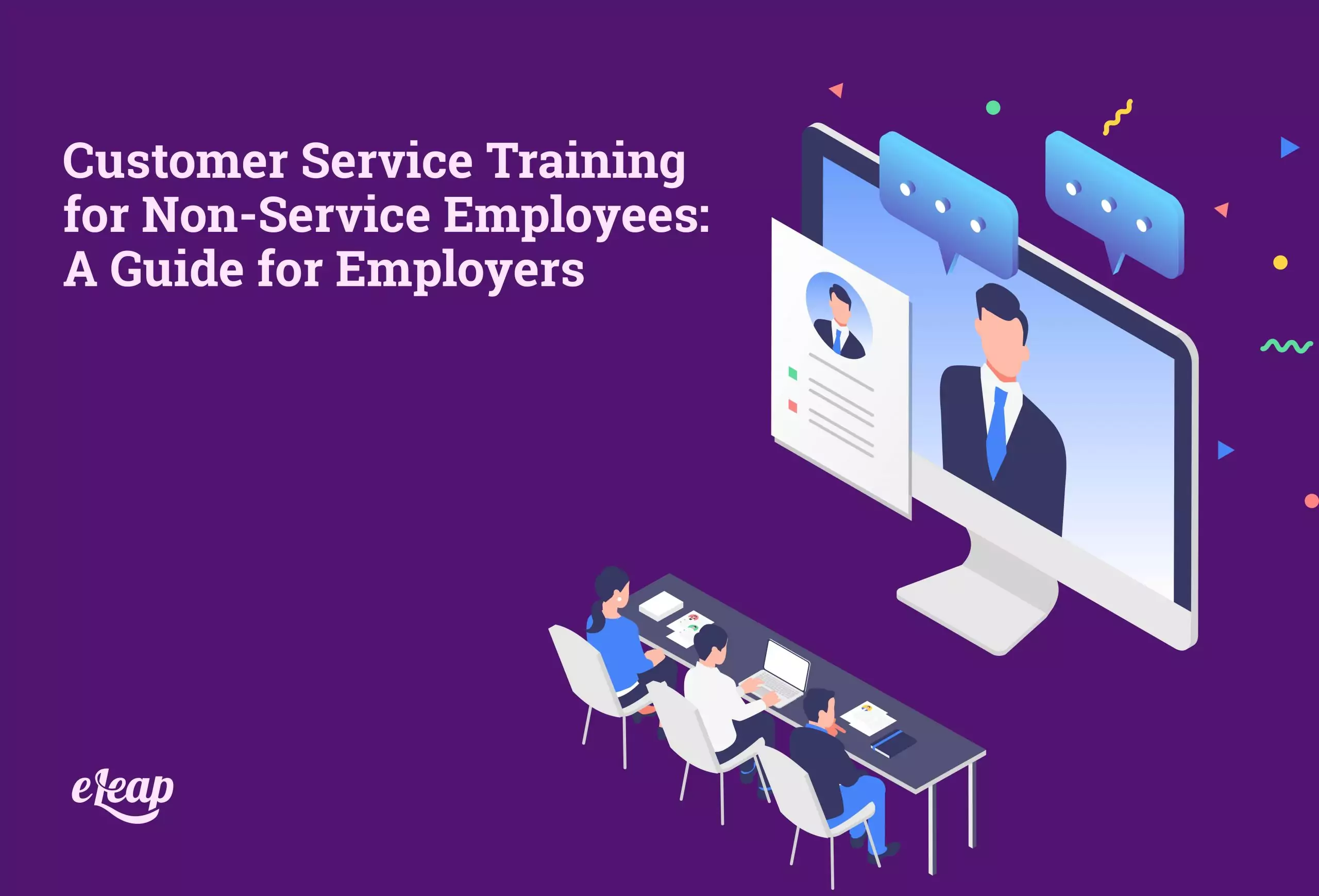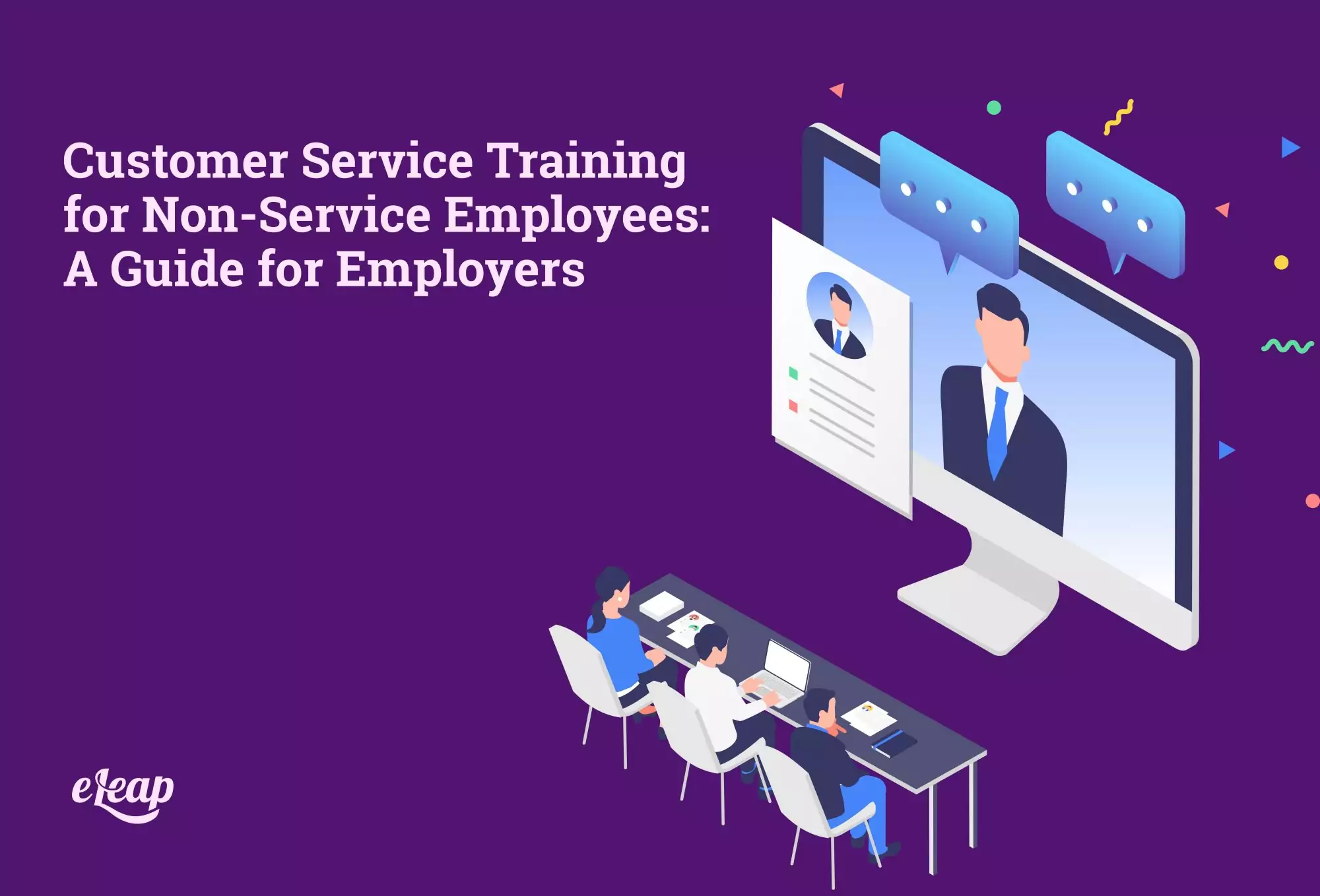Customer Service Training for Non-Service Employees: A Guide for Employers

Every employee in your organization is a representative of your brand. Their interactions while on the job, as well as in their personal lives, impact brand perception and value. The challenge is how to ensure that all employees understand their impact on the organization’s success. While soft skills training gets the eye roll, we know investing in customer service training pays tremendous benefits every single time.

One option is to provide training across the board. Essentially, this is customer service training for non-service employees. As such, it should be suitable for everyone, from the most recent new hire to leadership. In fact, having it apply across the board can drive home the value and importance of this type of training.
Be Flexible and Customize Training
While all employees represent your brand, they do not all do so in the same way or to the same degree. Those on the front lines will deal directly with customers day in and day out. Whether we’re talking about account representatives that need to sell to their contacts and meet expectations, sales teams on the shop floor, or customer service specialists providing care and solutions after the sale, customer service training should be flexible and customized.
The key thing to understand here is this: customer service training should be applied across the board, but it should be customized to the employee’s needs and common types of customer interaction. Someone in the mailroom will not need the same level of training as a product developer, for instance. On what should you base your customization of training? Here are some common metrics:
- Frequency of interaction with customers in a work setting
- Role in the organization – customer service, product development, etc.
- Type of interaction with or impact on customers
Someone who interacts directly with customers, whether that’s over the phone, by text chat, or face-to-face, will require very different training than someone working in the warehouse who may never come face-to-face with a customer. However, that warehouse employee does have a major impact on the customer experience simply because of their job. What if they pack a box incorrectly and the product arrives damaged? That immediately creates a negative experience that could have been avoided simply by being a bit more careful in packing the box.
To address this and ensure that you’re able to deliver the customized training necessary, take a long, hard look at how an employee’s daily responsibilities affect the end customer. That impact could come anywhere, from marketing messages to direct interaction. Identify it and then create training that helps employees find ways to ensure the impact is positive.
Train from Day One
Another important tip is this: It is never too early to start training with customer service in mind. In fact, it should begin from the very first day. With new employees, that means you need to make customer service training an integral part of your onboarding process.
A great example of this can be found in Disney. The company requires new employees, regardless of the role they were hired to fill, to complete training focused on serving the needs of customers. This involves more than just basic customer service training and goes so far as to teach Disney’s values and ethics, as well as the company’s unique philosophy when it comes to customer service (or “guests” as they’re called).
You’ll find several benefits offered when you begin customer service training this early. One of them is relatively obvious – your employees, regardless of position or role, can provide an outstanding customer experience. They’re aware of their impact on customer interactions and experiences, even if they never interact with them directly.
Back to that warehouse worker, they understand the need to take their time and pack items with care, wrapping purchases in bubble wrap or swaddling them with padding to protect them during transit. They take ownership of the experience that customers will have when they open the box to find (to their delight) the well-protected products they just purchased.
However, there is another benefit here, one that’s more akin to foresight and problem prevention than to what most of us would consider customer service. You’re able to identify new hires who struggle to put themselves in the customer’s shoes, that fail to really “get” the reason that service is so important, or who cannot absorb the fact that, no matter what they do, customer service is their job.
With that knowledge, you can take action. Zappos goes so far as to offer these people a financial incentive to leave the organization so that they are not bringing the wrong people into the business. You don’t need to go quite so far, but this does provide you with an important way to identify potential challenges, ensuring that you’re able to keep a closer eye on potential problems over time.
Focus on OJT
The first few weeks of a new employee’s time with your organization set habits and thought processes that can last an entire career. You must get it right the first time. One thing to consider here is OJT in customer service, even if the employee will never work the phones or answer an irate customer’s email or social media message.
On-the-job training involves both theoretical learning and practical application of skills. In many cases, it can (and should) involve a new hire shadowing a more experienced worker as they go about their duties. There’s a lot to be gained by having new hires for other departments spend a few days shadowing your customer service reps so they get a crash course in what it’s all about. You may even choose to go so far as to let them handle calls or emails so that they can learn by doing, rather than just by watching.
It’s Everyone’s Responsibility
In the end, customer service is everyone’s responsibility. It falls as much on the CEO and the warehouse team as it does on your customer service specialists. Focus on ways to help deliver customized, flexible training that speaks directly to each employee’s impact on the customer experience and you may be surprised at the difference it can make.